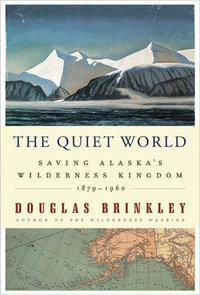
At a Glance
ePUB
eBook
$172.99
or 4 interest-free payments of $43.25 with
orInstant Digital Delivery to your Booktopia Reader App
This authoritative volume brings together some of the world’s leading researchers, academics, practitioners and transportation agency personnel to present the current status of the ecological sustainability of the linear infrastructure - primarily road, rail and utility easements - that dissect and fragment landscapes globally. It outlines the potential impacts, demonstrates how this infrastructure is being improved, and how broad ecological principles are applied to mitigate the impact of road networks on wildlife.
Research and monitoring is an important aspect of road ecology, encompassing all phases of a transportation project. This book covers research and monitoring to span the entire project continuum - starting with planning and design, through construction and into maintenance and management. It focuses on impacts and solutions for species groups and specific regions, with particular emphasis on the unique challenges facing Asia, South America and Africa.
Other key features:
- Contributions from authors originating from over 25 countries, including from all continents
- Each chapter summarizes important lessons, and includes lists of further reading and thoroughly up to date references
- Highlights principles that address key points relevant to all phases in all road projects
- Explains best-practices based on a number of successful international case studies
- Chapters are "stand-alone", but they also build upon and complement each other; extensive cross-referencing directs the reader to relevant material elsewhere in the book
Handbook of Road Ecology offers a comprehensive summary of approximately 30 years of global efforts to quantify the impacts of roads and traffic and implement effective mitigation. As such, it is essential reading for those involved in the planning, design, assessment and construction of new roads; the management and maintenance of existing roads; and the modifying or retrofitting of existing roads and problem locations. This handbook is an accessible resource for both developed and developing countries, including government transportation agencies, Government environmental/conservation agencies, NGOs, and road funding and donor organisations.
Industry Reviews
"In conclusion, the book provides a very important contribution to the understanding of the effects of linear infrastructures on wildlife. It is 'reader friendly' and practice driven, and I'm sure it will generate both further research and collaboration in the field, so that the highest beneficiary will be the natural vegetation and fauna." (Bulletin of the Eurasian Dry Grassland Group, 1 November 2015)
"Authors focused and wrote concisely, which means the contents are readily digestible and consequently easy to use for students in both academic and more technical and practical disciplines... Another major strength of the Handbook of Road Ecology is its comprehensive international coverage. Each of the three editors is from a different continent, and the other contributors cover an impressively diverse range of countries, developed and developing, and cultures. This means that in addition to providing a comprehensive compendium for people seeking information on ecologically sustainable road construction and planning, the volume is also valuable for learning from approaches and solutions applied in different regions...The cross-referencing of chapters is helpful and enables readers to find other chapters relevant to a particular topic with ease. The editors have clearly put considerable effort into ensuring the book is concise and easy to use for all those who are interested in the challenges of ecologically sustainable construction and planning of roads. Each chapter begins with a succinct summary and bullet points and ends with suggestions for further reading, which makes it easy to use as a reference work from which relevant information can be located easily and quickly. The book is richly illustrated with colored photographs and figures." Conservation Biology, 00: 0 (2017)
on
Notes on contributors ix
Foreword xx
Richard T. T. Forman
Preface xxii
About the companion website xxiv
1 The ecological effects of linear infrastructure and traffic: Challenges and opportunities of rapid global growth 1
Rodney van der Ree, Daniel J. Smith and Clara Grilo
2 Bad roads, good roads 10
William F. Laurance
3 Why keep areas road?]free? The importance of roadless areas 16
Nuria Selva, Adam Switalski, Stefan Kreft and Pierre L. Ibisch
4 Incorporating biodiversity issues into road design: The road agency perspective 27
Kevin Roberts and Anders Sjolund
5 Improving environmental impact assessment and road planning at the landscape scale 32
Jochen A. G. Jaeger
6 What transportation agencies need in environmental impact assessments and other reports to minimise ecological impacts 43
Josie Stokes
7 Principles underpinning biodiversity offsets and guidance on their use 51
Yung En Chee
8 Construction of roads and wildlife mitigation measures: Pitfalls and opportunities 60
Cameron Weller
9 Ensuring the completed road project is designed, built and operated as intended 65
Rodney van der Ree, Stephen Tonjes and Cameron Weller
10 Good science and experimentation are needed in road ecology 71
Rodney van der Ree, Jochen A. G. Jaeger, Trina Rytwinski and Edgar A. van der
Grift
11 Field methods to evaluate the impacts of roads on wildlife 82
Daniel J. Smith and Rodney van der Ree
12 Case study: A robust method to obtain defendable data on wildlife mortality 96
Eric Guinard, Roger Prodon and Christophe Barbraud
13 Road-wildlife mitigation planning can be improved by identifying the patterns and processes associated with wildlife-vehicle collisions 101
Kari Gunson and Fernanda Zimmermann Teixeira
14 Incorporating landscape genetics into road ecology 110
Paul Sunnucks and Niko Balkenhol
15 Guidelines for evaluating use of wildlife crossing structures 119
Edgar A. van der Grift and Rodney van der Ree
16 Guidelines for evaluating the effectiveness of road mitigation measures 129
Edgar A. van der Grift, Rodney van der Ree and Jochen A. G. Jaeger
17 How to maintain safe and effective mitigation measures 138
Rodney van der Ree and Stephen Tonjes
18 Understanding and mitigating the negative effects of road lighting on ecosystems 143
Bradley F. Blackwell, Travis L. DeVault and Thomas W. Seamans
19 Ecological impacts of road noise and options for mitigation 151
Kirsten M. Parris
20 Fencing: A valuable tool for reducing wildlife-vehicle collisions and funneling fauna to crossing structures 159
Rodney van der Ree, Jeffrey W. Gagnon and Daniel J. Smith
21 Wildlife crossing structures: An effective strategy to restore or maintain wildlife connectivity across roads 172
Daniel J. Smith, Rodney van der Ree and Carme Rosell
22 Recreational co?]use of wildlife crossing structures 184
Rodney van der Ree and Edgar A. van der Grift
23 Predator-prey interactions at wildlife crossing structures: Between myth and reality 190
Cristina Mata, Robert a Bencini, Brian K. Chambers and Juan E. Malo
24 Wildlife warning signs and animal detection systems aimed at reducing wildlife-vehicle collisions 198
Marcel P. Huijser, Christa Mosler?]Berger, Mattias Olsson and Mart in Strein
25 Use of reflectors and auditory deterrents to prevent wildlife-vehicle collisions 213
Gino D'Angelo and Rodney van der Ree
26 Ecological effects of railways on wildlife 219
Benjamin Dorsey, Mattias Olsson and Lisa J. Rew
27 Impacts of utility and other industrial linear corridors on wildlife 228
A. David M. Latham and Stan Boutin
28 The impacts of roads and traffic on terrestrial animal populations 237
Trina Rytwinski and Lenore Fahrig
29 Insects, snails and spiders: The role of invertebrates in road ecology 247
Heinrich Reck and Rodney van der Ree
30 Case study: Protecting Christmas Island's iconic red crabs from vehicles 258
Rob Muller and Mike Misso
31 Making a safe leap forward: Mitigating road impacts on amphibians 261
Andrew Hamer, Thomas E. S. Langton and David Lesbarreres
32 Reptiles: Overlooked but often at risk from roads 271
Kimberly M. Andrews, Tom A. Langen and Richard P. J. H. Struijk
33 Flight doesn't solve everything: Mitigation of road impacts on birds 281
Angela Kociolek, Clara Grilo and Sandra Jacobson
34 Bats and roads 290
Isobel M. Abbott, Anna Bert hinussen, Emma Stone, Martijn Boonman, Markus Melber and John Altringham
35 Carnivores: Struggling for survival in roaded landscapes 300
Clara Grilo, Daniel J. Smith and Nina Klar
36 Case study: Roads and jaguars in the Mayan forests 313
Eugenia Pallares, Carlos Manterola, Dalia A. Conde and Fernando Colchero
37 Case study: Finding the middle road - grounded approaches to mitigate highway impacts in tiger reserves 317
Sanjay Gubbi
38 Case study: African wild dogs and the fragmentation menace 322
Brendan Whittington?]Jones and Harriet Davies?]Mostert
39 Roads, traffic and verges: Big problems and big opportunities for small mammals 325
Fernando Ascensao, Scott LaPoint and Rodney van der Ree
40 Reducing road impacts on tree?]dwelling animals 334
Kylie Soanes and Rodney van der Ree
41 Case study: Canopy bridges for primate conservation 341
Andrea Donaldson and Pamela Cunneyworth
42 Transportation and large herbivores 344
Patricia Cramer, Mattias Olsson, Michelle E. Gadd, Rodney van der Ree and Leonard E. Sielecki
43 Case study: The Mount Kenya elephant corridor and underpass 353
Susie Weeks
44 Form and function: A more natural approach to infrastructure, fish and stream habitats 357
Paul J. Wagner
45 Solutions to the impacts of roads and other barriers on fish and fish habitat 364
Fabrice Ottburg and Matt Blank
46 The function and management of roadside vegetation 373
Suzanne J. Milton, W. Richard J. Dean, Leonard E. Sielecki and Rodney van der Ree
47 Roads in the arid lands: Issues, challenges and potential solutions 382
Enhua Lee, David B. Croft and Tamar Achiron?]Frumkin
48 Road ecology in an urbanising world 391
Darryl Jones, Hans Bekker and Rodney van der Ree
49 Tropical ecosystem vulnerability and climatic conditions: Particular challenges for road planning, construction and maintenance 397
Miriam Goosem
50 The influence of economics, politics and environment on road ecology in South America 407
Alex Bager, Carlos E. Borg hi and Helio Secco
51 Highway construction as a force in the destruction of the Amazon forest 414
Philip M. Fearnside
52 Road ecology in South India: Issues and mitigation opportunities 425
K. S. Seshadri and T. Ganesh
53 Planning roads through sensitive Asian landscapes: Regulatory issues, ecological implications and challenges for decision?]making 430
Asha Rajvanshi and Vinod B. Mathur
54 Setjhaba SA, South Afrika: A South African perspective of an emerging transport infrastructure 439
Wendy Collinson, Dan Parker, Claire Patterson?]Abrolat, Graham Alexander and Harriet Davies?]Mostert
55 Unfenced reserves, unparalleled biodiversity and a rapidly changing landscape: Roadways and wildlife in East Africa 448
Clinton W. Epps, Katarzyna Nowak, and Benezeth Mutayoba
56 Expected effects of a road across the Serengeti 455
Michelle E. Gadd
57 China: Building and managing a massive road and rail network and protecting our rich biodiversity 465
Yun Wang, Yaping Kong and Jiding Chen
58 Railways, roads and fences across Kazakhstan and Mongolia threaten the survival of wide?]ranging wildlife 472
Kirk A. Olson and Rodney van der Ree
59 Best?]practice guidelines and manuals 479
Marguerite Trocme
60 Case study: The role of non?]governmental organisations (ngos) and advocates in reducing the impacts of roads on wildlife 485
Patricia White
61 Case study: Building a community of practice for road ecology 488
Paul J. Wagner and Andreas Seiler
62 Wildlife/roadkill observation and reporting systems 492
Fraser Shilling, Sarah Perkins and Wendy Collinson
Glossary 502
Species 509
Index 513
ISBN: 9781118568163
ISBN-10: 1118568168
Published: 18th May 2016
Format: ePUB
Language: English
Audience: Professional and Scholarly
Publisher: Wiley Global Research (STMS)
Country of Publication: GB
Edition Number: 1
You Can Find This eBook In
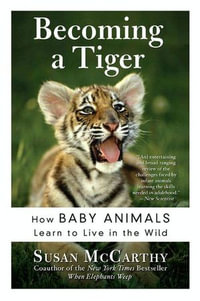
eBOOK
RRP $31.89
$25.99
OFF

eBOOK
RRP $28.59
$22.99
OFF

eBOOK
RRP $38.49
$30.99
OFF
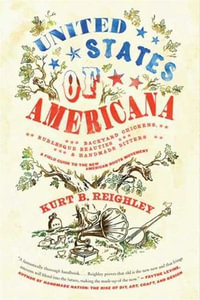
eBOOK
RRP $24.19
$19.99
OFF

eBOOK
RRP $37.39
$29.99
OFF
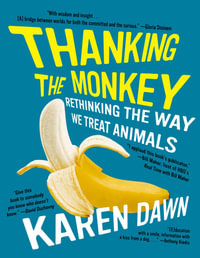
eBOOK
RRP $28.59
$22.99
OFF

eBOOK
RRP $28.59
$22.99
OFF

eBOOK
RRP $28.59
$22.99
OFF

eBOOK
RRP $17.59
$14.99
OFF
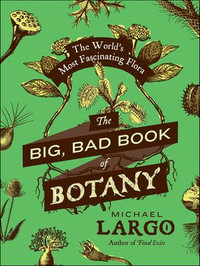
eBOOK
RRP $27.49
$21.99
OFF
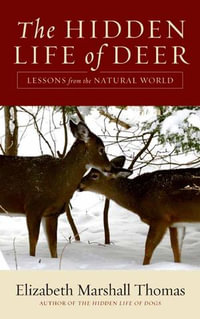
eBOOK
RRP $27.49
$21.99
OFF

eBOOK
$10.99

eBOOK
RRP $27.49
$21.99
OFF

eBOOK
RRP $28.59
$22.99
OFF
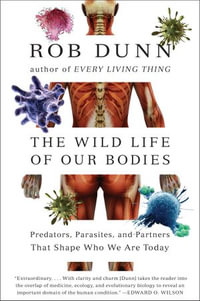
eBOOK
RRP $14.29
$11.99
OFF

eBOOK
RRP $28.59
$22.99
OFF

eBOOK
A Garden of Marvels
How We Discovered that Flowers Have Sex, Leaves Eat Air, and Other Secrets of Plants
eBook
RRP $27.49
$21.99
OFF

eBOOK
$14.99

